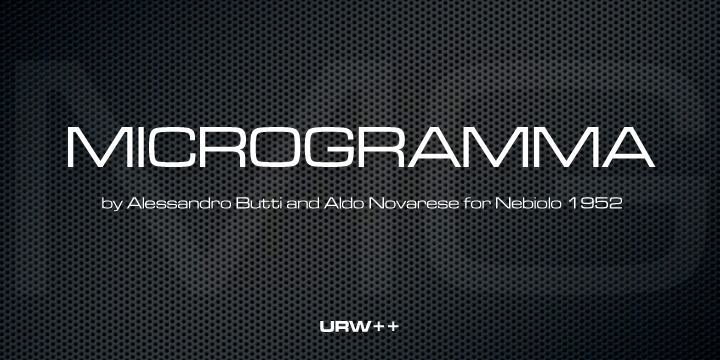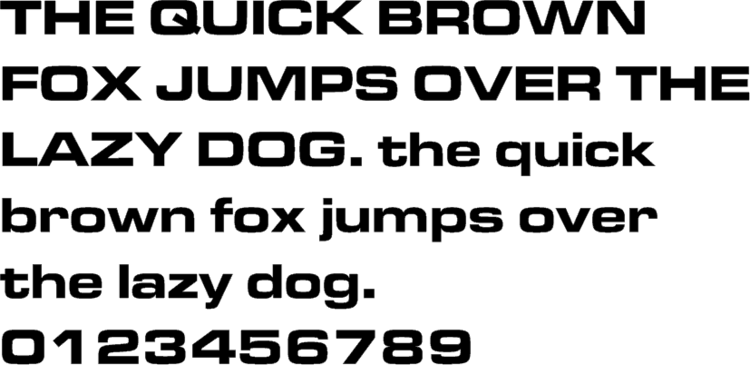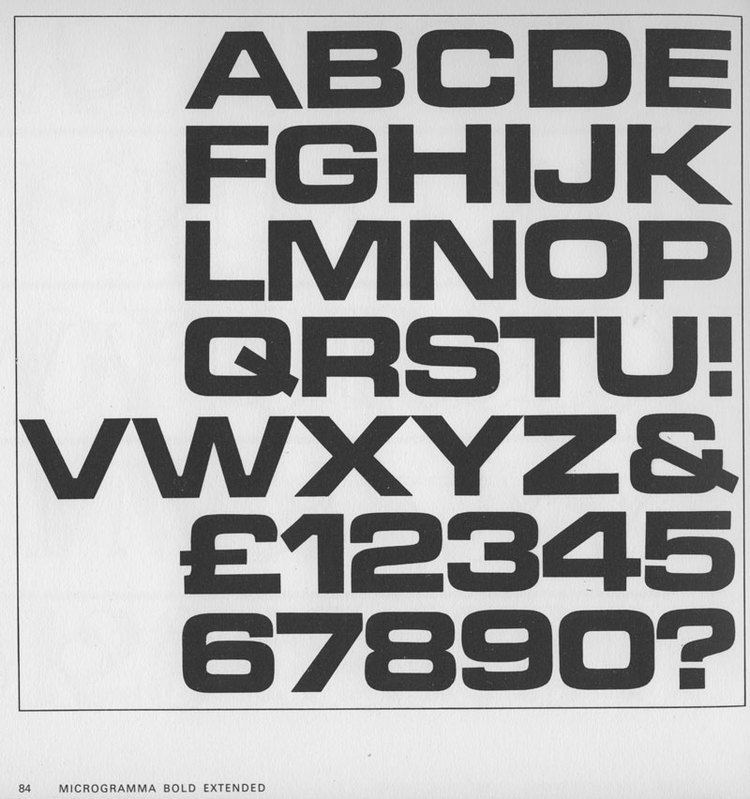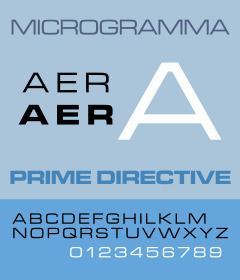Date created 1952 | ||
 | ||
Re-issuing foundries URW++, Mergenthaler Linotype Company | ||
Microgramma is a sans serif font which was designed by Aldo Novarese and Alessandro Butti for the Nebiolo Type Foundry in 1952. It became popular for use with technical illustrations in the 1960s and was a favourite of graphic Designer(s) by the early seventies, its uses ranging from publicity and publication design to packaging, largely because of its availability as a Letraset typeface. Early typesetters (like the AM Varityper) also incorporated it.
Contents

The typeface is almost always used in its extended and Bold extended forms (pictured). Initially, it only had upper-case letters. Later versions, by Linotype and URW/Nebiolo, contain lower case letters, accented Latin characters, mathematical symbols, and Latin ligatures. In the URW/Nebiolo version, there are also extended Latin, subscripts and superscripts, extended Latin ligatures.

Novarese himself later developed Eurostile in 1962, a typeface very similar to Microgramma. Eurostile added lower-case letters, a bold condensed variant, and an ultra narrow design he called Eurostile Compact.

Microgramma OnlyShadow

Microgramma OnlyShadow is a variant of Microgramma Bold that contains only the shadows of Microgramma Extended Bold, designed by URW Studio and Aldo Novarese in 1994. Although Alessandro Butti died in 1959, URW credited him as the designer of the new font.

The Euro sign in the font has a different weight, styled from a different font family, and is not shadowed.
Microgramma in popular culture
Not long after inception, Microgramma was widely appropriated for use in science fiction film, depicting advanced technology and space exploration.
Microgramma and its related variations are used throughout the original Alien franchise films, as well as the more recent reincarnations. Weyland-Yutani, the primary corporate conglomerate within both the earlier and recent Alien films (including the recent genre crossover Alien vs. Predator franchise films), features use of Microgamma and its Bold Extended typeface in its corporate logo, although not exclusively.
Star Trek
The Microgramma Bold Extended typeface was used extensively in the Star Trek universe, such as Franz Joseph's The Star Trek Star Fleet Technical Manual. The font, in both its original and various altered forms, was incorporated into numerous displays and on ship exteriors in six of the Star Trek motion pictures, as well as depictions of "earlier technology" display screens, particularly for the Enterprise "prequel" series, during the four later television series.
WWE
Following the 2016 WWE Brand Extension Draft and WWE Battleground 2016, WWE Raw unveiled a new logo which used Microgramma font, and all title cards and graphics on the show used this font as well. Coincidentally, the following night, WWE SmackDown Live also unveiled a new logo - although it did not use Microgramma, all title cards and graphics on the show used the font as well.
Movies
Television
Other
Many car manufacturers in the 1980s and the 1990s, notably Honda and Nissan, use Microgramma on the interior gauges and switches of their vehicles. Abarth also use the font extensively. Radiohead used Microgramma in their breakthrough albums, The Bends and OK Computer,. US rock band Hurt used it for their logo.
According to MasGrafx Racing Graphics, Microgramma is the font of several NASCAR numbers; #8 (Mark Martin), #3 (Dale Earnhardt) and #29 (Kevin Harvick). Some of these are in italics.
Microgramma is also the default logo font used by Alienware computers.
